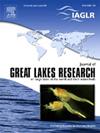A new observation of lake whitefish Coregonus clupeaformis spawning behaviour
IF 2.4
3区 环境科学与生态学
Q3 ENVIRONMENTAL SCIENCES
引用次数: 0
Abstract
The lake whitefish Coregonus clupeaformis, dikameg in Anishinaabemowin, holds cultural importance, and is a mainstay of commercial, recreational, and subsistence fisheries throughout North America. In the Laurentian Great Lakes, declines in recruitment, since the early 2000s, have raised concerns among stewards and fishery managers. A more detailed understanding of the lake whitefish mating system could help resolve potential recruitment bottlenecks and thus inform appropriate stewardship actions. Herein, we describe, for the first time, a single lake whitefish spawning event captured using high-resolution underwater videography. From 94 h spent on the water, we captured and analyze a 4.5-min video clip that shows pre-mating, mating, and post-mating behaviours of a male and female lake whitefish pair in Little Traverse Bay, Lake Michigan. The clip shows a number of what we interpret as courtship, site-selection, and spawning behaviours culminating in release of about 20 eggs and milt in a single spawning event. Behaviours that included travelling, physical contact, chasing, circling, orienting, and gamete release are described and time-referenced to a video supplement. This single observation is part of a larger project to assess lake whitefish spawning behaviour in the wild but is noteworthy in that it provides new insights into the spawning behaviour of lake whitefish and appears consistent with reproductive behaviours observed in European coregonines.
湖白鱼产卵行为的新观察
湖白鱼Coregonus clupeaformis,产于Anishinaabemowin,具有重要的文化意义,是整个北美商业、娱乐和自给渔业的支柱。在劳伦森五大湖,自21世纪初以来,招聘人数的下降引起了管理人员和渔业经理的担忧。更详细地了解湖白鱼的交配系统可以帮助解决潜在的招募瓶颈,从而为适当的管理行动提供信息。在这里,我们描述了,第一次,一个单一的湖白鱼产卵事件捕获使用高分辨率水下摄像。我们在水里花了94个小时,拍摄并分析了一段4.5分钟的视频片段,展示了密歇根湖小特拉弗斯湾一对雄性和雌性湖白鱼的交配前、交配和交配后的行为。这段视频展示了许多我们所理解的求爱、选址和产卵行为,最终在一次产卵事件中释放了大约20个卵和卵。包括旅行、身体接触、追逐、绕圈、定向和释放配子在内的行为都被描述和时间参考视频补充。这一单一的观察是评估野生湖白鱼产卵行为的一个更大项目的一部分,但值得注意的是,它为湖白鱼的产卵行为提供了新的见解,并且似乎与在欧洲coregonines观察到的生殖行为一致。
本文章由计算机程序翻译,如有差异,请以英文原文为准。
求助全文
约1分钟内获得全文
求助全文
来源期刊

Journal of Great Lakes Research
生物-海洋与淡水生物学
CiteScore
5.10
自引率
13.60%
发文量
178
审稿时长
6 months
期刊介绍:
Published six times per year, the Journal of Great Lakes Research is multidisciplinary in its coverage, publishing manuscripts on a wide range of theoretical and applied topics in the natural science fields of biology, chemistry, physics, geology, as well as social sciences of the large lakes of the world and their watersheds. Large lakes generally are considered as those lakes which have a mean surface area of >500 km2 (see Herdendorf, C.E. 1982. Large lakes of the world. J. Great Lakes Res. 8:379-412, for examples), although smaller lakes may be considered, especially if they are very deep. We also welcome contributions on saline lakes and research on estuarine waters where the results have application to large lakes.
 求助内容:
求助内容: 应助结果提醒方式:
应助结果提醒方式:


